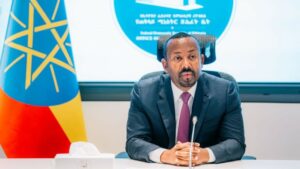False narratives do not feed the people — they only serve those who profit from legalized corruption.
Behind the carefully managed image of “reform” in Ethiopia’s Somali region lies a painful truth. While a few elites thrive under political protection, millions of ordinary Somalis remain trapped in poverty, displacement, and hopelessness.
The Harsh Reality on the Ground
Despite repeated government claims of progress, the Somali region faces one of the most alarming humanitarian crises in Ethiopia:
- Over 1 million internally displaced people (IDPs)
- 30% of the population affected by ethnic cleansing
- Only 250 students admitted to universities in the past five years
- Child mortality rate of 50 per 1,000, among the highest in Ethiopia
- 100,000 unemployed youth in Jigjiga alone
- 90% of the population lives below the poverty line
- 90% lack access to electricity
- 60% illiteracy rate
These figures are not abstractions — they represent real human suffering and the collapse of basic public services.
Governance and the Erosion of Self-Rule
Under President Mustafa Omer, the Somali region has witnessed the steady dismantling of local democracy and self-governance.
Key constitutional protections and political freedoms have been rolled back:
- The right to self-administration has been undermined
- Opposition political parties have been dissolved
- The ONLF has been pushed toward renewed confrontation
- Reports continue of killings and torture of young detainees in Jigjiga
- The administration has become a family-centered power network, spending millions on foreign lobbyists while the population faces starvation and displacement
This model of governance rewards loyalty and silences dissent — turning a regional administration into a private business empire.
Economic Inequality and Lost Hope
While government officials and their close associates enjoy luxury and privilege, most Somali citizens face deep economic deprivation.
The result is a society where:
- Qualified professionals, such as doctors and teachers, are underpaid and undervalued
- Youth unemployment continues to fuel frustration and migration
- Access to education and healthcare is alarmingly low
The leadership’s obsession with control and allegiance has closed the door of opportunity for an entire generation.
The Resilience of the Somali People
Yet, despite these challenges, the Somali people remain resilient.
Their strength lies in community, culture, and an enduring will to rise above oppression. The future of the Somali region depends not on imported agents or external interests, but on independent Somali leaders who put their people’s welfare above politics.
While Addis Ababa may applaud these failures as “reforms,” the Somali people know the truth — and history will remember who stood on the side of justice.
Conclusion: The Need for Accountable Leadership
The Somali region stands at a crossroads.
It can continue down the path of corruption, repression, and propaganda — or it can begin a new chapter of truth, accountability, and people-centered governance.
The Somali people deserve leadership that protects their dignity, defends their rights, and invests in their future.
False narratives may deceive for a time, but truth and resilience will prevail.
The Somali people will rise again — not through false reform, but through genuine unity, justice, and self-determination.

